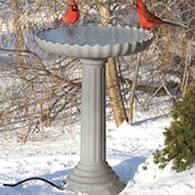When Do Woodpeckers Lay Eggs? (It Depends Where You Live!)
If you've been hearing drumming in the trees or noticed a woodpecker poking around a dead branch a little too intently, there's a good chance they're getting ready to raise a family.
But exactly when do woodpeckers lay their eggs? That all depends on the species and where you are.
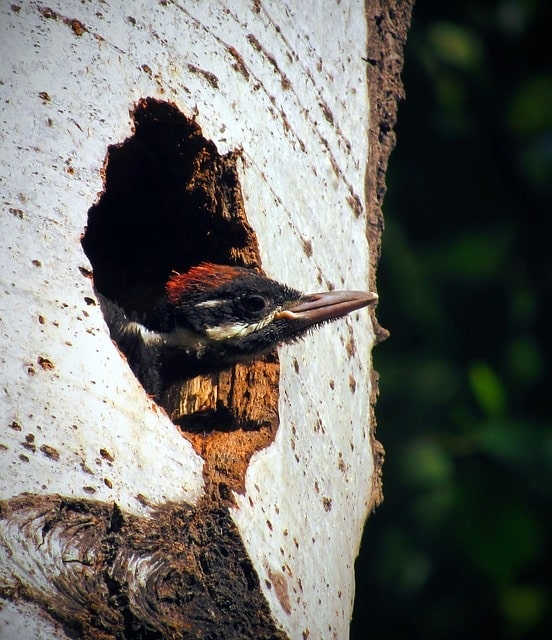
Baby Woodpecker Waiting to be Fed
Woodpeckers don't follow a strict calendar. Below, we'll break down when five of the most common North American woodpeckers lay eggs.
The five we'll discuss are, Red-bellied, Pileated, Downy, Hairy, and Red-headed Woodpeckers.
We'll also look at how their nesting habits change depending on where they call home.
Quick Glance: Egg-Laying Timeline by Species and Region
| Species | Southern US Nesting | Northern US Nesting | Clutch Size | Incubation |
|---|---|---|---|---|
| Downy | Late March - May | Mid-Late April | 3-8 eggs | 12 days |
| Hairy | April | Late April - May | 3 - 6 eggs | 14 days |
| Red-bellied | April | Late April - May | 3 - 8 eggs | 12 days |
| Red-headed | Late April | Early May - June | 4 - 7 eggs | 12 - 14 days |
| Pileated | Late April - May | May - Mid-June | 3 - 5 eggs | 15 - 18 days |
What Comes Before the Eggs?
Before eggs hit the nest, there's a whole lot of activity going on. You'll often hear drumming, see excavation work, and maybe even catch two birds checking out the same cavity.
Most woodpeckers like to carve out their own nest hole—especially the Downy and Pileated—and that process alone can take a week or more.
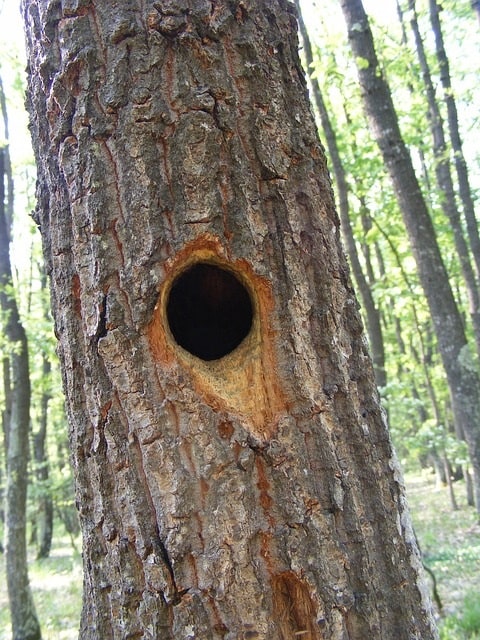
Completed Woodpecker Nest Cavity
Once the cavity is ready and the pair has bonded, egg-laying usually begins within a few days.
Where Do They Nest?
Woodpeckers prefer tree cavities, especially in dead or dying trees (called snags). If you're in a more suburban area, they might settle for utility poles, fence posts, or even wooden sheds.
- Downy and Hairy: Smaller trees, fence posts, backyard snags
- Red-bellied: Softwood trees, sometimes will reuse cavities
- Red-headed: Open woodlands, love dead trees near clearings
- Pileated: Big birds = big trees. They love mature forests
In the South, woodpeckers may start drumming and inspecting nest sites as early as February, but egg-laying usually doesn't start until late March or April.
In the North, snow and frozen ground delay everything by a few weeks. Expect activity to pick up mid to late April, with eggs showing up in May.
Who Sits on the Eggs?
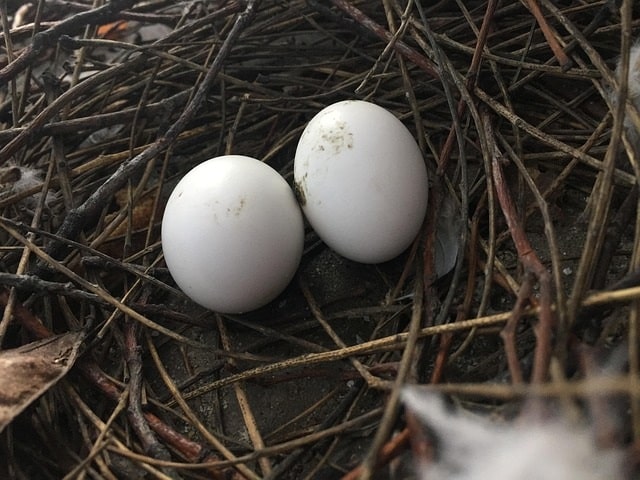
Two Bird Eggs
In many woodpecker species, both parents take turns incubating the eggs. Males often take the night shift (gentlemen move in silence with eggs under them, apparently).
- Incubation lasts 12 to 18 days, depending on the species
- Chicks are born featherless and blind, totally dependent
- Parents feed them soft insects at first, then gradually more solid prey
Do They Reuse Nests?
Most woodpeckers build a fresh cavity each year. Why? Old cavities might be full of mites, parasites, or leftovers from last year's kids.
Red-bellied and Red-headed Woodpeckers will sometimes reuse a nest if it's in great shape and unoccupied.
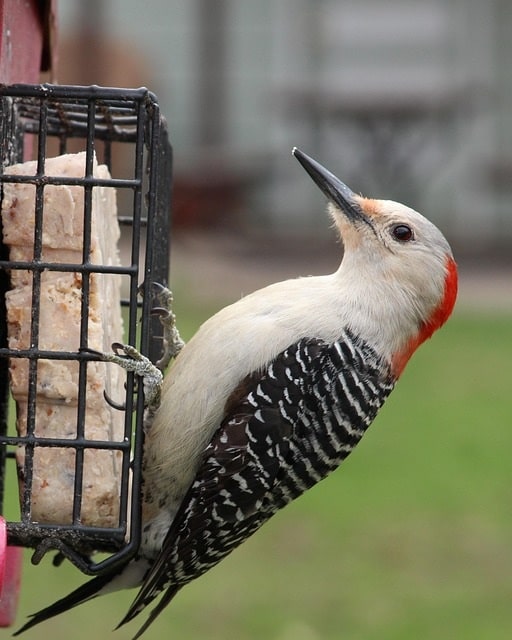
Red-bellied Woodpecker Sometimes Reuse Nest Cavity
Predators: Who's After the Eggs?
Woodpecker eggs have enemies. Nest cavities help, but predators still find a way.
- Snakes, especially rat snakes in the South
- Raccoons and squirrels, known nest raiders
- Other birds like starlings may even take over active nests
How to Tell If Woodpeckers Are Nesting Nearby
Here are a few signs you've got a woodpecker family in the making:
- Persistent drumming in the same spot for days
- A pair of birds visiting a tree hole over and over
- Little chips of wood at the base of a tree or post
- Later in the season, you might hear faint chick sounds from inside a tree!
Do woodpeckers lay eggs more than once a year?
Most woodpecker species lay a single clutch per breeding season, though some southern birds may raise a second brood if conditions are ideal.
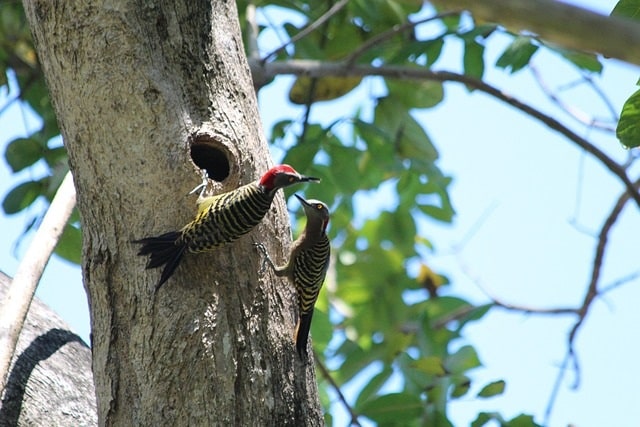
Two Adult Woodpeckers at Nest Cavity
Final Thoughts: It's All About Timing
Woodpeckers are creatures of rhythm—literally. Their drumming marks territory, attracts mates, and signals the start of nesting season.
If you're hoping to spot nesting behavior or maybe even help out with a nest box, timing is key.
Get familiar with your region's birds, listen closely, and you just might witness the full woodpecker parenting experience—from first tap to first flight.

